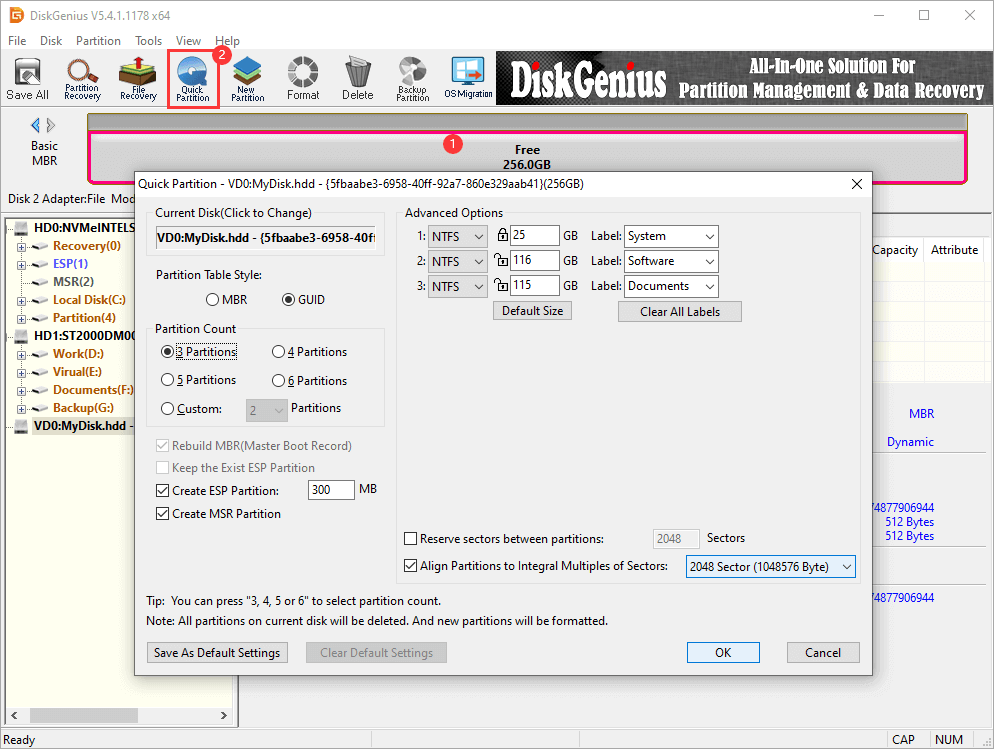

- #Parallels for mac resize partition serial
- #Parallels for mac resize partition full
- #Parallels for mac resize partition iso
- #Parallels for mac resize partition windows
If networking is unsupported by the emulated architecture, these options will be disabled. Invert Mouse Scroll can be used to invert the emulated scroll wheel. The Input tab gives the option for Legacy mode which should only be enabled for ancient operating systems (such as DOS) which does not support USB. The default command should work in most Linux distributions. The command is different depending on the guest operating system, but should be used to inform the OS that the console size has changed and to render UI elements accordingly.
#Parallels for mac resize partition serial
The Resize Console Command is a string that is sent to the serial input when the Resize button is pressed while the VM is running. In Console Only mode, you can change aspects of the terminal display. The Scaling options control what hardware scalers are used when resizing the VM window.
#Parallels for mac resize partition full
In Full Graphics, the Emulated Display Card will be set to be recommended default. Full Graphics is not supported for all architectures and if it is not supported, it will be grayed out. Full Graphics emulates a display card while Console Only emulates a serial console. The Display tab provides options to showing the VM’s output. You can re-order drives by using the arrow buttons. The listed order of the drives are the same order exposed to QEMU which can affect boot order. Most users can leave the default here as only advanced use cases require changing the interface. If you create a New Drive you can choose the Interface to attach the drive to. Most other common disk image formats are compatible with QEMU but you will not be able to suspend a running VM when you have non-removable non-QCOW2 images mounted. If you choose to Import Drive, it is recommended that you import a QCOW2 formatted drive image. If you choose to Import the ISO, then you cannot change the mounted disk image while the VM is running.
#Parallels for mac resize partition iso
You can then select the ISO image from the home screen or while the VM is running. If you wish to mount an ISO disk image, it is recommended that you create a New Drive and check Removable. Import Drive will let you select a file to mount and New Drive will let you create either an empty removable drive or an empty hard drive. You can create and mount virtual drives for the VM in the Drives tab.

If you choose to Bypass Configuration, then all other configuration options (including attached drives) will be ignored! This option should only be used for debugging. You can also export the full QEMU command generated by UTM for the current configuration. You can choose to enable debug logging and to export the last debug log (created when the VM starts). The QEMU tab is only for advanced use cases and for debugging emulation issues. Most users should not touch the Advanced Settings, but there you can fine tune parts of the emulation. It is recommended that you assign no more than half the amount of physical RAM if you do not want to significantly affect the performance of your Mac. You should not assign more memory than the amount of physical RAM on your computer or you may experience slowdowns or even crashes. Most users should not have to change this from the default. The System drop-down lets you fine tune the emulated system to be a specific model or device. When you change the architecture to a well-known one, other settings will change to the default recommended settings so in most cases you do not have to manually change any of the other settings (except Memory and Drives).

#Parallels for mac resize partition windows
The most common architecture is x86_64, which is used by modern Intel and AMD processors (most PCs) and is used by most versions of Windows and Linux. The architecture is the CPU and determines what operating systems you can run. In the System tab, you can configure the Architecture, System, and Memory. You can also write any Notes that will be displayed in the home screen when the VM is selected. utm package which contains all data corresponding to this VM. The name must be unique as it is also the name of the. In the Information tab, you should give your VM a Name and optionally assign an icon to identify your VM by. When creating a new VM from scratch, you will see the same screen as when modifying an existing VM’s configuration. All the other tabs are for more advanced use cases and the options should be set to the recommended default. If you choose to create from scratch, most users do not need to change any options except from the Information tab, the System tab, and the Drives tab. You have the option to browse the gallery (recommended for new users) or to create a new VM from scratch. In the main window, press the “+” button on the top toolbar next to the title.


 0 kommentar(er)
0 kommentar(er)
